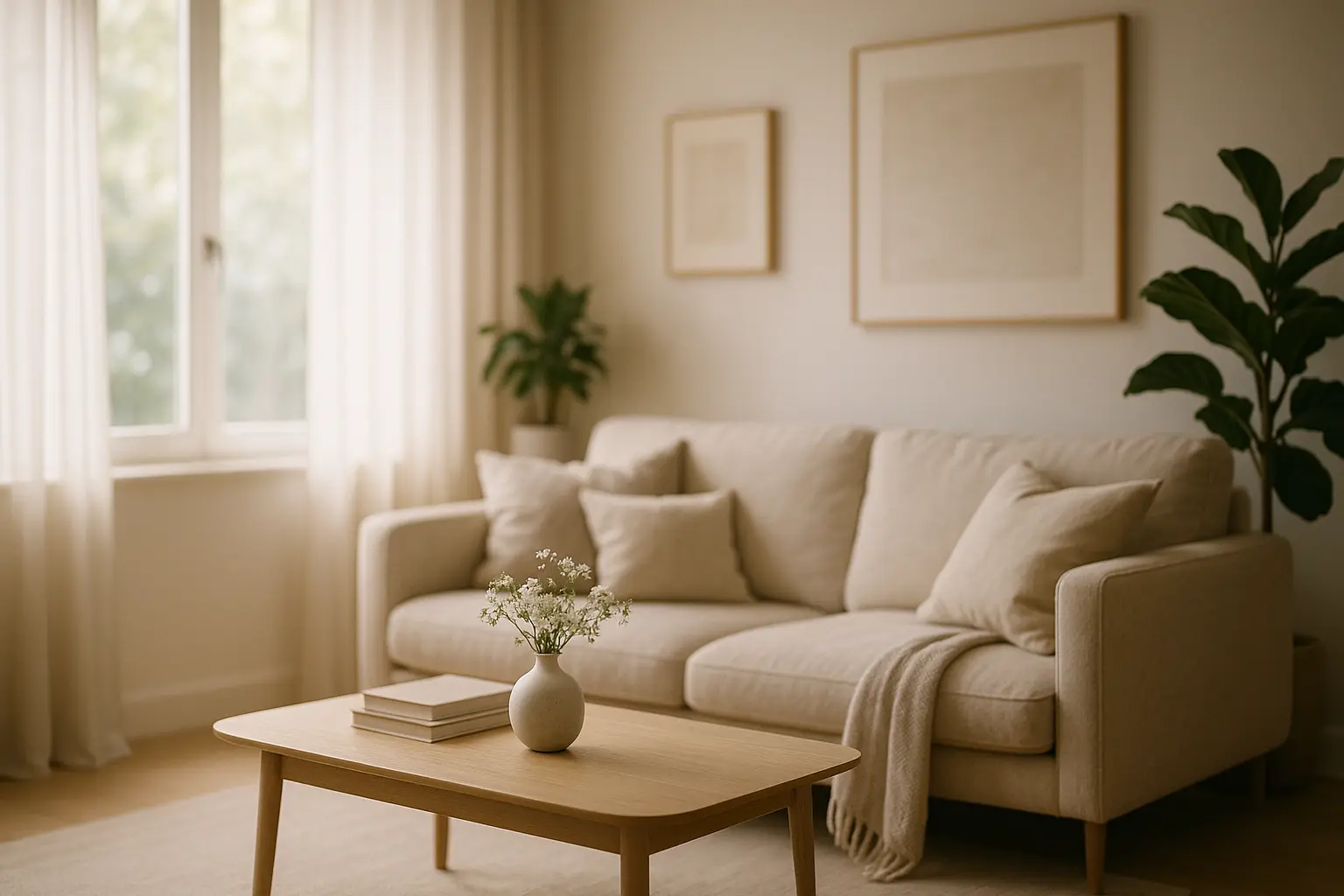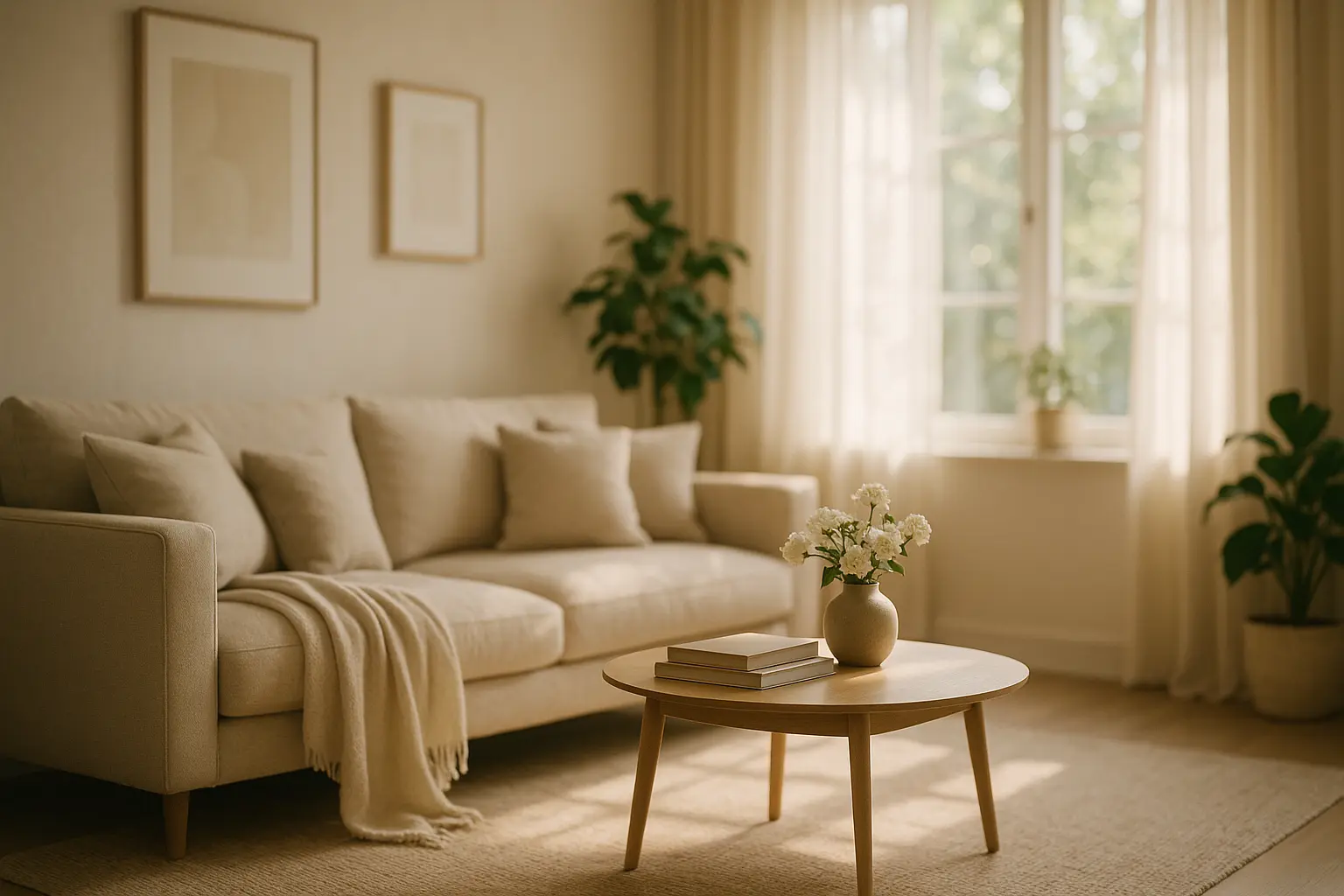In our quest for well-being, we often overlook the spaces we inhabit daily. Yet, the pervasive influence of interior design on our mental health is undeniable. Colors, light, and the overall structure of a room can profoundly impact our mood, shaping how we feel and interact with our surroundings. Today, with a growing understanding of mental health, it’s crucial to explore how the interplay of these design elements can foster a space conducive to mental well-being. Let’s delve into the art and science of crafting environments that support our psychological health and well-being.
Harnessing the Power of Color
Color is more than a visual experience; it’s a powerful tool that influences our emotions and behaviors. Each hue carries specific psychological associations. Warm colors like red and orange can evoke excitement and energy, while cooler tones like blue and green are often linked to calmness and relaxation.
To create a nurturing environment, it’s essential to select colors that align with the desired emotional response. For instance, gentle blues and greens are ideal for bedrooms, promoting relaxation and restful sleep. Conversely, a pop of vibrant yellow in the kitchen can stimulate appetite and foster a sense of joy.
Incorporating natural elements, such as wooden furniture or green plants, can further enhance the mood-enhancing effects of color. The earthy tones found in these materials promote a sense of grounding and tranquility, seamlessly bridging the gap between the natural world and our indoor spaces.
Ultimately, by thoughtfully curating color palettes, we can design spaces that not only visually please but also support our mental health, creating rooms that feel harmonious and balanced.
The Enchanting Influence of Light
Light is a critical component in interior design that significantly impacts our mental well-being. The way light interacts with a space can alter its mood and atmosphere, affecting how we feel within it. Natural light, in particular, has a profound effect on our mental health.
Exposure to natural light boosts serotonin levels, leading to improved mood and productivity. Spaces with ample windows and open layouts allow sunlight to permeate, creating a sense of openness and connection to the outside world. This connection is vital for mental health, especially in urban environments where nature can feel distant.
On the other hand, artificial lighting also plays a role. Soft, warm lights can evoke feelings of coziness and intimacy, perfect for rooms meant for relaxation, such as living rooms or bedrooms. Task lighting in workspaces should be bright yet gentle on the eyes, preventing strain and enhancing focus.
By balancing natural and artificial light, we can create environments that are both functional and pleasing, fostering a sense of well-being and enhancing our daily lives.

Crafting Spaces for Well-being
Creating a space that promotes mental health involves more than just aesthetic appeal; it requires a thoughtful consideration of its purpose and the elements within. When designing these spaces, we should aim to cultivate environments that offer solace, inspire creativity, and provide comfort.
Begin by considering the layout of a room. Open, airy designs encourage movement and interaction, reducing feelings of confinement. Incorporate elements of nature, such as indoor plants or water features, which have been shown to reduce stress and enhance mental well-being.
Furniture placement also plays a key role. Arranging seating to foster interaction or solitude, depending on the room’s purpose, can greatly influence our mood. Comfortable, ergonomic furniture ensures physical comfort, contributing to overall satisfaction and mental health.
Incorporating personal touches, such as artwork or family photographs, adds another layer of emotional connection to the space. These elements can evoke positive memories and feelings, reinforcing a sense of identity and belonging.
By mindfully integrating these elements, we can transform our environments into spaces that not only function efficiently but also nurture our mental health, providing a haven of well-being amidst the chaos of daily life.
As we navigate the complexities of modern life, the importance of our surroundings becomes increasingly evident. Through the intentional use of color, light, and thoughtful design, we have the power to create environments that support and enhance our mental well-being. These spaces become more than just rooms; they transform into sanctuaries where we can rejuvenate, reflect, and thrive.
By recognizing the profound impact of interior design on our psychological health, we can take deliberate steps to design spaces that help us feel better and live well. Let’s embrace the art of interior design as a tool for mental well-being, crafting environments that elevate our moods, inspire positive change, and foster enduring happiness.
FAQ
How does interior design influence mental well-being?
Interior design affects mental well-being by shaping the environment where individuals spend their time. Color schemes, lighting, and spatial arrangements can either promote relaxation and positivity or contribute to stress and anxiety. Thoughtful design can enhance mood, increase productivity, and foster a sense of calm.
What role do colors play in affecting mood and emotions within a space?
Colors have a significant impact on emotions and mood. Warm colors like red and yellow can energize and stimulate, while cool colors like blue and green tend to soothe and calm. The choice of color should align with the intended use of the space and the desired emotional response.
Can furniture arrangement affect mental health?
Yes, furniture arrangement can influence mental health by affecting space flow and functionality. A well-organized layout can improve movement, reduce clutter, and create a harmonious environment, all of which contribute to a sense of well-being and mental clarity.
How does natural light contribute to mental wellness in interior spaces?
Natural light is crucial for mental wellness as it helps regulate the body’s circadian rhythms, boosting mood and productivity. Exposure to natural light can reduce symptoms of depression, enhance focus, and improve overall mental health. Incorporating large windows or strategically placed mirrors can maximize natural light in a space.
What elements of interior design can help reduce stress?
Several elements can help reduce stress, including the use of calming colors, introduction of natural elements like plants, and the creation of clutter-free spaces. Incorporating soft furnishings and textures, using ambient lighting, and ensuring good air quality are also effective in mitigating stress levels.


